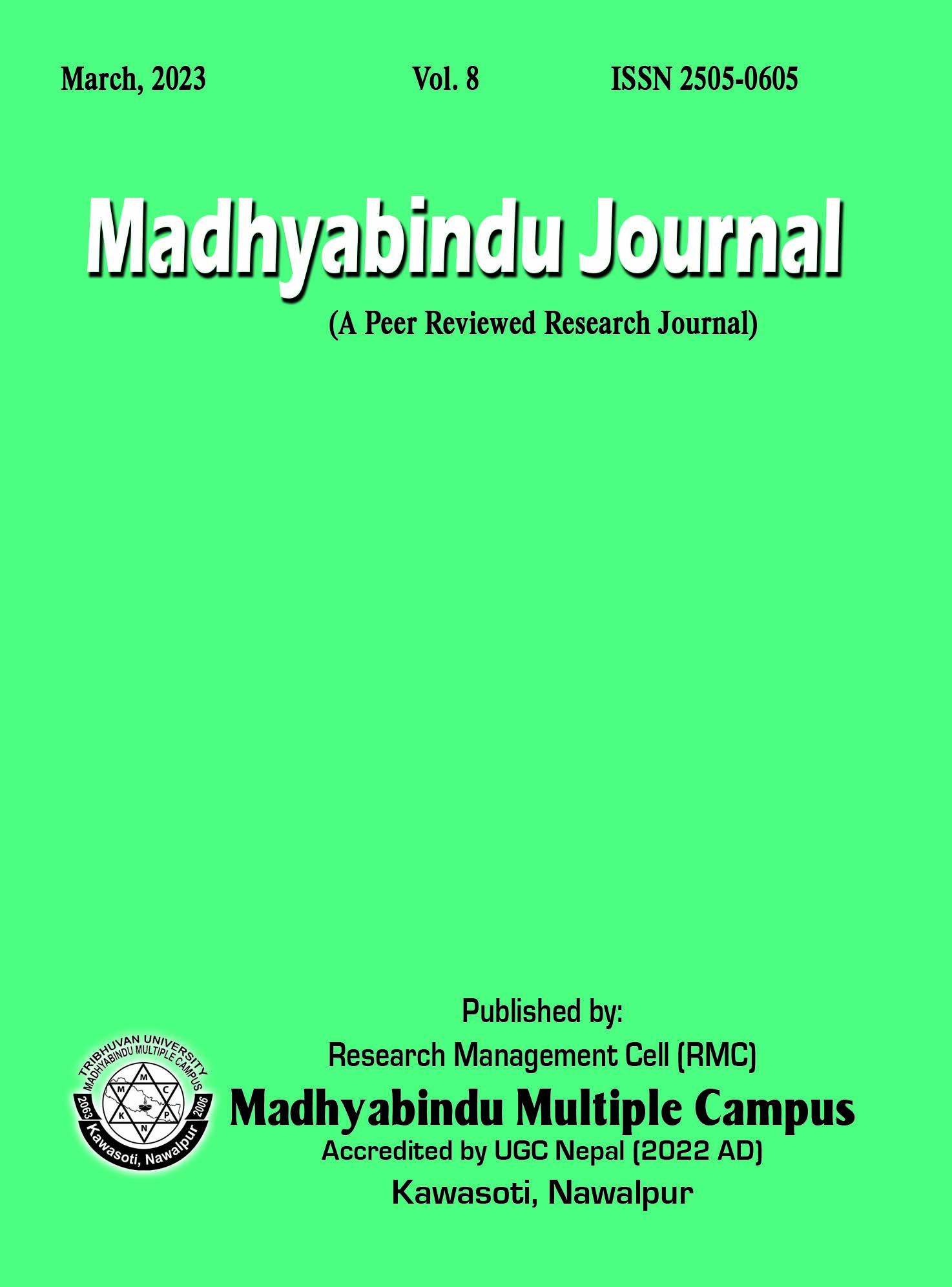Euphemization and Derogation in Teacher Students’ Dialogic Discourse: A Critical Discourse Analysis
DOI:
https://doi.org/10.3126/madhyabindu.v8i1.56882Keywords:
Ideology, Euphemization, Derogation, Discursive Structures, Critical Discourse Analysis, Positive self-representation vs. negative other-representationAbstract
Critical discourse analysis (CDA) has become a widely used academic research method in the social, political, educational, and linguistic sciences. This paper aims to explain how teacher-student dialogic discourse is presented and evaluated differently to persuade the students. Van Dijk's (2004) framework, is used to identify discursive structures that lead to ideologically based parochial, context, ideology, and social cognition. The CDA of the teacher students’ dialogic discourse has highlighted the reality that ideologies are expressed, performed, sustained, and inculcated through discursive frameworks. In terms of measuring attitudes and opinions, the macro methodologies of positive self-representation and negative other representations have proven to be precise. Euphemism and derogation are frequently used in ideological language manipulations that aiming to portray the self and others negatively and positively. They show how positive self-representation or negative other-representation can serve ideological purposes. The CDA applied to the teacher and students' dialogic discourse in this article shows these in-group/out-group distinctions. The outcomes ofthis study could help students and teachers improve their critical thinking skills in language comprehension and production, as well as revitalize the undervalued idea of language competency.
Downloads
Downloads
Published
How to Cite
Issue
Section
License
© Madhyabindu Journal
The work is simultaneously licensed under a policy and procedure of Madhyabindu Journal, which permits others to distribute the work with an acknowledgement of the work's authorship and initial publication in this journal. With an acknowledgement of its original publication in this journal, authors can enter into separate, extra contractual arrangements for the non-exclusive dissemination of the journal's published version of the work (e.g., posting it to an institutional repository or publishing it in a book).




